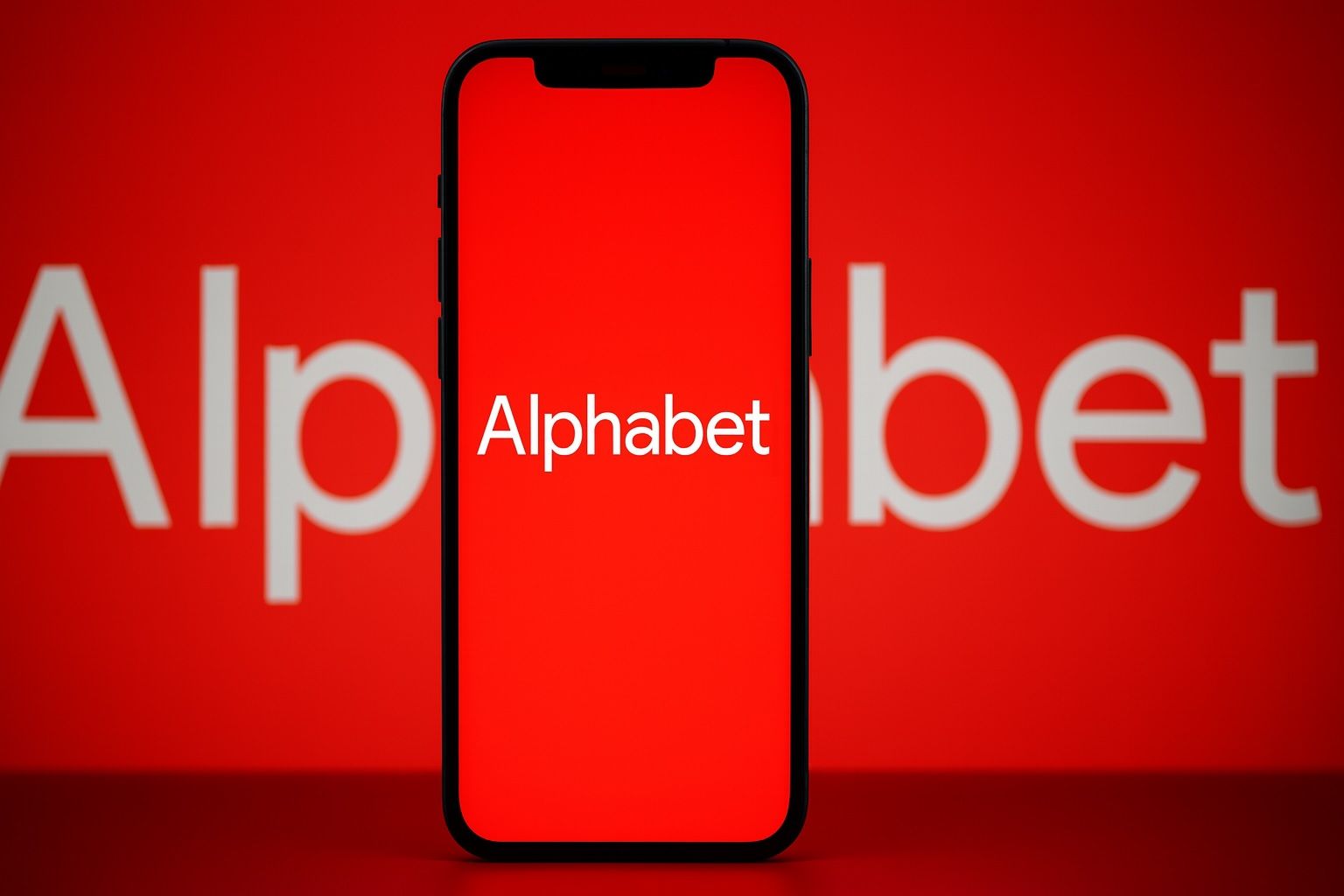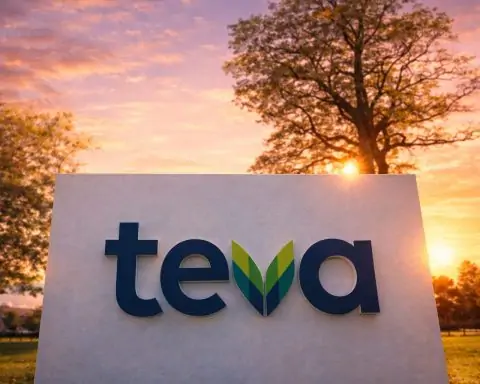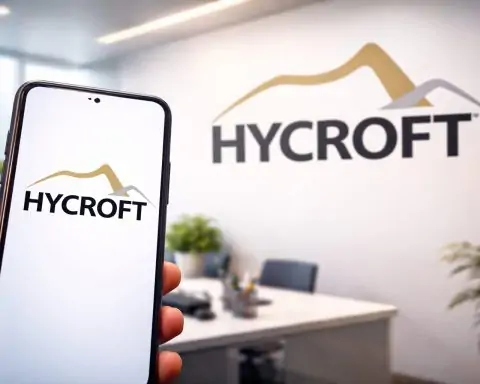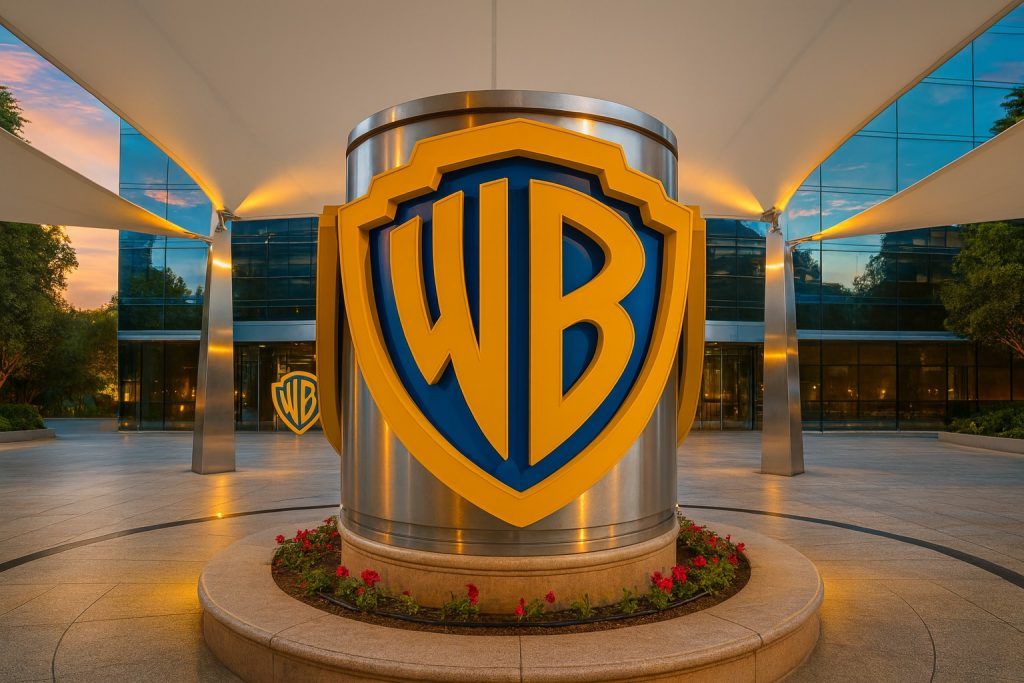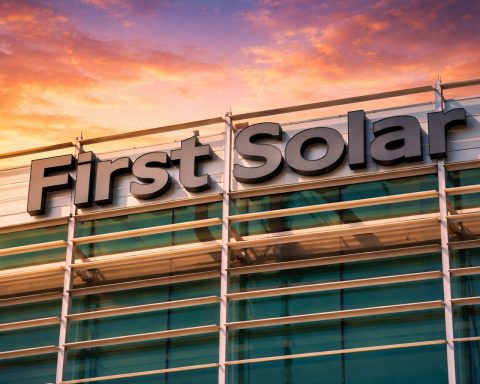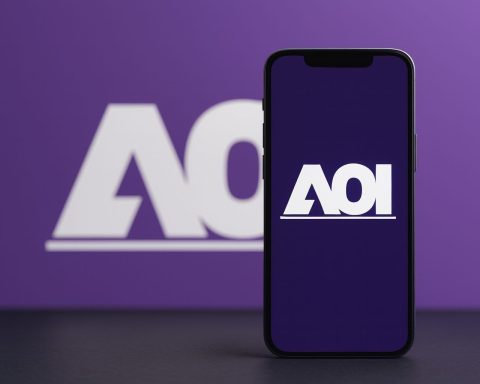- Record Rally & Recent Volatility: Alphabet’s Class A shares (NASDAQ: GOOGL) traded near an all-time high (~$256) in mid-October 2025 [1], up roughly 30% year-to-date. On Oct. 20 the stock briefly hit a record intraday high (~$256) [2]. It then slid ~2.4% on Oct. 21 after OpenAI revealed its ChatGPT Atlas browser, but rebounded on Oct. 22 as investors digested new news.
- Cloud and AI Deals: Bloomberg/Reuters reported on Oct. 21 that Google is in talks to provide cloud services to AI startup Anthropic in a deal worth tens of billions [3]. Alphabet also announced a $15 billion investment to build a major AI data center (1 GW “AI hub”) in Visakhapatnam, India [4] – its largest-ever investment in India. Moreover, Google Cloud was named the official cloud provider for the 2028 Los Angeles Olympics, partnering with LA28, Team USA and NBCU on AI-powered viewing experiences [5].
- Product and AI Investment: The company continues an aggressive AI push: it recently unveiled over $24 billion in new AI infrastructure spending (new data centers, custom AI chips/TPUs in India and the U.S.) and launched AI-capable devices like the Pixel 10 smartphone [6] [7]. Google’s YouTube and Search services have also been infused with new AI features.
- Regulatory Updates: Britain’s Competition and Markets Authority designated Google’s search business as having “strategic market status” (over 90% UK share), giving regulators new oversight powers [8]. In the U.S., the Supreme Court on Oct. 6 declined to block a lower court’s order requiring Google’s Play Store to allow rival app stores and external payment links (effective by 2026) [9]. Alphabet also won a Sept. ruling that exempts it from a forced breakup, but still faces other probes (EU fined Google $3.45B last month for ad-tech practices [10]).
- Analyst Upgrades: Wall Street is optimistic. On Oct. 16 Scotiabank lifted its GOOG target to $310 from $240 [11]. BMO Capital on Oct. 9 raised its target to $294, citing AI leadership and stronger ad/cloud growth [12]. Morgan Stanley on Oct. 2 set a $270 target [13], and Bank of America on Oct. 20 bumped its target to $280 ahead of earnings [14]. Many analysts’ forecasts now imply further upside – a few even eye the $300 level if growth holds [15].
- Earnings Ahead: Alphabet reports Q3 2025 results on Oct. 29. Street forecasts are for roughly $84–85 billion revenue (mid-teens growth YoY) and about $2.29 earnings per share [16]. Analysts will watch ad demand, YouTube monetization, and whether Google Cloud maintains its profitability trend (it turned profitable in Q2).
Post-Atlas Selloff and Anthropic News Rekindle Rally
Alphabet’s stock briefly tumbled Tuesday (Oct. 21) after OpenAI unveiled the ChatGPT Atlas browser, a direct challenge to Google Chrome. The stock closed at $250.46 on Oct. 21 (down ~2.4%) [17] [18] after initially plunging as much as 4.8% intraday. OpenAI’s Atlas integrates ChatGPT into web browsing and includes an “agent mode” for automating tasks [19] [20]. Analysts warned this could threaten Google’s search ad franchise. “It will be a big challenge competing with a giant who has ridiculous market share,” noted Forrester analyst Paddy Harrington about OpenAI’s browser contesting Google’s dominance [21].
However, the headwind was quickly offset. In after-hours trade on Oct. 21, reports emerged (via Bloomberg/Reuters) that Alphabet is negotiating a multibillion-dollar cloud contract with Anthropic, the AI startup behind the Claude model [22]. Alphabet and Anthropic already have ties (Google invested in Anthropic and provides compute for its models), so an expanded deal would lock in another major AI partner. The market responded positively: Alphabet shares jumped about 2.3% in postmarket trade [23], putting the stock back toward record levels.
Meanwhile, optimism about Alphabet’s core businesses remains high. Analysts highlight that Google’s bold AI bets have translated into strong ad and cloud growth. As one put it, Alphabet’s latest earnings “was a blow to the bears, with strong growth across all major segments” [24]. Bernstein strategist Mark Shmulik added: “Perhaps Dr. Google is just what this market needed – a healthy dose of strong fundamental performance” [25]. Such comments reflect confidence that Google’s search and advertising engine (now augmented by AI) is firing on all cylinders, while Google Cloud is closing the gap with AWS and Azure – as seen by its 32% revenue surge and first-time profitability in Q2 [26]. Bank of America notes Google has “data and distribution advantages” in the AI race, underpinning the rally.
AI, Cloud and Products Driving Growth
Alphabet has doubled down on AI infrastructure and services. Google CEO Sundar Pichai has highlighted the company’s massive expansion of custom AI chips (TPUs) and data centers. Over the past month Alphabet announced roughly $24 billion in additional infrastructure spending – including new data centers in India and the U.S. for AI computing [27]. Globally, Google is expanding cloud capacity: notably, on Oct. 14 Google pledged $15 billion over five years to build a new AI data center complex in Andhra Pradesh, India [28]. This “largest AI hub” outside the U.S., as Google Cloud’s Thomas Kurian called it, will help fuel demand for Google’s cloud and AI services.
On the consumer side, Google rolled out new AI-enabled products. Although the flagship Pixel 10 phone launched in August, the hype around it continues into the fall. Google says the Pixel 10 and Pixel Watch 4 are packed with on-device AI features (editing photos, health tracking, etc.). Google also introduced Gemini Enterprise on Oct. 9 (an AI platform for businesses to query data) and new AI tools for small businesses. All of these moves feed into investor optimism about Google’s long-term growth engines.
Major Partnerships and Investments
Alphabet has landed several high-profile partnerships this month. On Oct. 9 it was announced that Google Cloud will be the Official Cloud Provider for the 2028 Los Angeles Olympics [29]. Under this sponsorship (a “founding partner” deal), Google will supply cloud infrastructure and AI tools (including its Gemini AI and Google Search) to enhance NBCUniversal’s multiplatform Olympic coverage [30]. Marvin Chow of Google Marketing commented that this builds on Google’s prior sports broadcasting collaborations, aiming to make the Games “more personal and interactive for fans with the help of AI” [31].
In India, Alphabet is cementing its presence. The massive $15B data center project will also include partnerships with local firms like the Adani Group and Airtel to build connectivity (subsea cables, etc.) [32]. Google’s goal is to “accelerate India’s own AI mission,” according to Kurian [33], positioning Google to capture India’s booming internet market (nearly a billion users). Altogether, these deals highlight Alphabet’s strategy to marry AI innovation with global scale – from sports entertainment to emerging markets – which analysts say could justify high valuations if executed well.
Regulatory and Legal Watch
Despite the bullish buzz, Alphabet faces significant regulatory scrutiny. In the U.K., the Competition and Markets Authority on Oct. 10 granted Google “strategic market status” for online search [34]. This is a first-of-its-kind designation that allows the CMA to impose remedies on Google’s search business (e.g. fairer search rankings, new rules for AI-generated results, or easy opt-in to rival search engines) [35]. Google warned such interventions could “inhibit UK innovation and growth” [36].
In the U.S., Alphabet is embroiled in the Epic Games antitrust case over its Android app store. In early October, the U.S. Supreme Court declined to pause a lower court injunction requiring Google to allow third-party app stores and external payment links on Android [37]. Key provisions (rival store downloads, opening the app catalog) will take effect by July 2026 [38]. Google is appealing but said these changes could have “enormous consequences” for users and developers [39].
Alphabet also continues to face other investigations. U.S. regulators have probes into Google’s ad tech and search practices, and the EU recently fined Google $3.45 billion for anti-competitive ad business practices [40]. While Alphabet scored some legal victories (like avoiding a forced breakup of Chrome), these ongoing cases remain overhangs that could affect strategy or costs.
Stock Performance and Analyst Commentary
By the market close on Tuesday, Oct. 21, Alphabet’s stock was about $250.5 [41]. That reflected a pullback from the previous day’s record close (around $256.6 on Oct. 20 [42]). However, in pre-market trading Oct. 22, shares were climbing again on the cloud-deal news. Trading volume has been robust – Oct. 21 saw over 47 million shares changing hands [43] – showing high investor interest.
Wall Street analysts largely remain upbeat. Many have raised earnings estimates and price targets as Google’s results and outlook have exceeded expectations. As detailed above, Scotiabank, BMO, Morgan Stanley and BofA have all lifted their targets (to $310, $294, $270 and $280 respectively) citing strong ad demand and AI/cloud strength [44] [45] [46] [47]. For example, BofA’s research note on Oct. 20 noted that its checks show Q3 ad spending “ahead of expectations” and raised its revenue estimate to $86.0B (above consensus) [48].
Portfolio managers also point out Google’s reasonable valuation for its growth. Before Q1 earnings, Google’s forward P/E was in the high teens, trailing only Microsoft among big tech [49]. Deutsche Bank’s Benjamin Black summed up the market view: Alphabet’s results delivered a “blow to the bears” by reaffirming core growth despite macro worries [50]. And Bernstein’s Mark Shmulik quipped that Google’s strong performance was “a healthy dose of strong fundamental performance” for the market [51].
Short-term, the focus is on earnings and continuing AI progress. Analysts expect Alphabet to report double-digit revenue growth in Q3, driven by resilient search ads and continued gains in cloud services [52] [53]. They will also watch for any guidance on Q4 spending (Alphabet typically raises costs late in the year) and how Google addresses the OpenAI/Atlas threat.
Long-term, many investors remain bullish. Ts2 analysis notes that Alphabet “has multiple engines that could drive double-digit expansion for years” – from search to YouTube ads (now ~2.7 billion users) to the surging Google Cloud (with an expanding $106B backlog) [54]. Even Alphabet’s experimental units (Waymo robotaxis, etc.) add optional upside. However, analysts caution that growth must justify the lofty valuation. As one note put it, with shares trading near record highs “some experts warn that massive AI spending and ‘frothy’ tech prices could pose risks if growth falters” [55].
Outlook: Hype vs. Reality
In the short term, Alphabet’s stock is likely to hinge on the upcoming earnings report and how well management maintains momentum. If Q3 results beat forecasts and guidance stays strong, the stock could breach new highs (some targets now exceed $270, and a few on Wall Street see the low-$300s in the next 12–18 months [56]). On the other hand, any signs of slowing ad budgets or costly legal setbacks could prompt profit-taking after this year’s rally.
Looking long term, Google’s prospects remain tied to the success of its AI investments and cloud strategy. The company is betting heavily (tens of billions) that its data centers, AI chips and enterprise AI platform will pay off. If Google can continue to monetize search and YouTube even as AI interfaces evolve, and if Google Cloud can sustain ~30% growth, then many analysts believe the stock’s valuation is justified. As one strategist summarized, Alphabet’s “diversified tech ecosystem and AI investments position it for long-term leadership” [57]. For now, Alphabet appears to be a market favorite: Wall Street’s consensus price target has climbed into the mid-$270s [58] [59], reflecting confidence that the business can deliver on its hype.
Investors will be watching closely as Alphabet’s story unfolds in late 2025 – from regulatory rulings to product launches and global partnerships. As one analyst notes, “this tech titan is leveraging its dominant core businesses while investing boldly in the next wave of technology” [60]. Whether that translates into continued stock gains in the coming months will depend on execution against those ambitious plans.
Sources: Company filings, industry reports and news analysis from Reuters, AP News, TVTechnology, Investing.com, Ts2.tech and others [61] [62] [63] [64] [65] [66] [67].
References
1. ts2.tech, 2. ts2.tech, 3. www.reuters.com, 4. www.reuters.com, 5. www.tvtechnology.com, 6. ts2.tech, 7. ts2.tech, 8. www.reuters.com, 9. www.reuters.com, 10. www.reuters.com, 11. site.financialmodelingprep.com, 12. www.investing.com, 13. site.financialmodelingprep.com, 14. www.investing.com, 15. ts2.tech, 16. ts2.tech, 17. timesofindia.indiatimes.com, 18. www.investing.com, 19. apnews.com, 20. apnews.com, 21. apnews.com, 22. www.reuters.com, 23. www.reuters.com, 24. www.reuters.com, 25. www.reuters.com, 26. ts2.tech, 27. ts2.tech, 28. www.reuters.com, 29. www.tvtechnology.com, 30. www.tvtechnology.com, 31. www.tvtechnology.com, 32. www.reuters.com, 33. www.reuters.com, 34. www.reuters.com, 35. www.reuters.com, 36. www.reuters.com, 37. www.reuters.com, 38. www.reuters.com, 39. www.reuters.com, 40. www.reuters.com, 41. www.investing.com, 42. www.investing.com, 43. www.investing.com, 44. site.financialmodelingprep.com, 45. www.investing.com, 46. site.financialmodelingprep.com, 47. www.investing.com, 48. www.investing.com, 49. www.reuters.com, 50. www.reuters.com, 51. www.reuters.com, 52. ts2.tech, 53. ts2.tech, 54. ts2.tech, 55. ts2.tech, 56. ts2.tech, 57. ts2.tech, 58. site.financialmodelingprep.com, 59. www.investing.com, 60. ts2.tech, 61. www.reuters.com, 62. apnews.com, 63. www.tvtechnology.com, 64. www.reuters.com, 65. www.reuters.com, 66. ts2.tech, 67. www.investing.com
